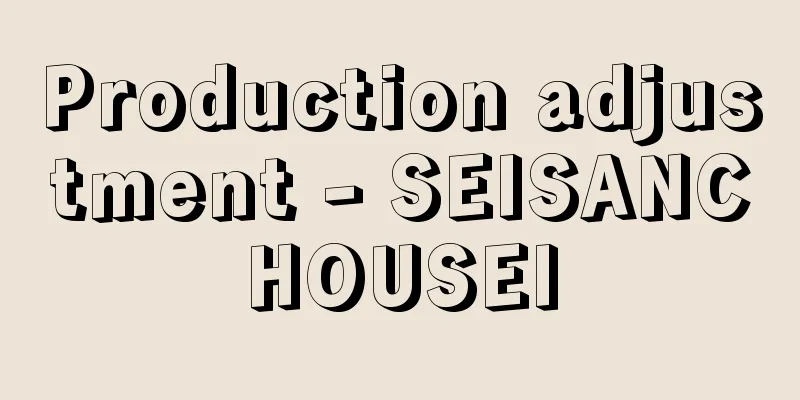Production adjustment - SEISANCHOUSEI

|
A policy that restricts production when demand for agricultural products continues to fall short of supply. It encourages and supports farmers to reduce acreage and switch to other crops. [Additional information] In Japan, rice production adjustments were implemented from around 1970 as a measure to deal with the rice surplus that began in the mid-1960s. Initially, this was implemented uniformly across the country as administrative guidance, but with the enforcement of the Food Law in 1995, producer groups were required to determine and allocate production targets independently, in principle, and administrative allocation of quantitative targets came to an end in 2017. Source: About Shogakukan Digital Daijisen Information | Legend |
|
農作物の需要が供給量を下回り続けた時などに、生産を抑制させる政策。農家に減反や転作を奨励し、援助を行うもの。減反。 [補説]日本では、1960年代中頃からの米余りへの対策として、1970年頃から米の生産調整が行われた。当初は行政指導として全国一律で行われたが、平成7年(1995)の食糧法施行に伴い、原則として生産者団体が自主的に生産目標を決定・配分する方法がとられ、平成29年(2017)をもって行政による数量目標配分は終了した。 出典 小学館デジタル大辞泉について 情報 | 凡例 |
Recommend
Oghuz Khan (English spelling)
…A legend, tale, or heroic epic poem passed down ...
Chionographis
...A beautiful perennial plant of the lily family...
Detention centre - Ryuchijo
A facility established at a police station to deta...
Storybook - Giwahon
…Each volume is a novel, but excluding one overla...
Isegigumo - Isegigumo
…They are widely distributed in the eastern and s...
Echizen Bureau - Echizen no Tsubone
...Years of birth and death unknown. He was the i...
Lard - lard
This fat is extracted from the fat tissue of pigs...
Hospital - International
1. In China, the style of painting of the painting...
Collision
A phenomenon in which two objects gradually appro...
Exterior wall - exterior wall
...From the perspective of the former, it is poss...
Kracholov, PT (English spelling) KracholovPT
…Bulgarian poet. Real name Pejo Totev Kracholov. ...
Strawger, AB
…As telephones became more widespread and more co...
Rivulogammarus nipponensis
… There are a huge number of species, ranging fro...
Shizuoka [city] - Shizuoka
A city in central Shizuoka Prefecture. It was inco...
Unfair trade restrictions
One of the types of conduct that the Antimonopoly ...







![Kounu [town] - Kounu](/upload/images/67cb8b353311a.webp)

